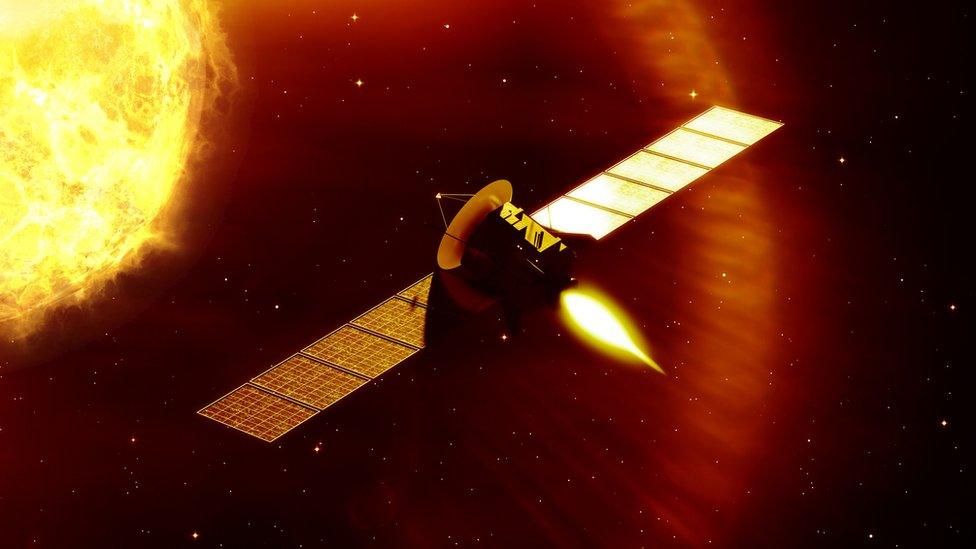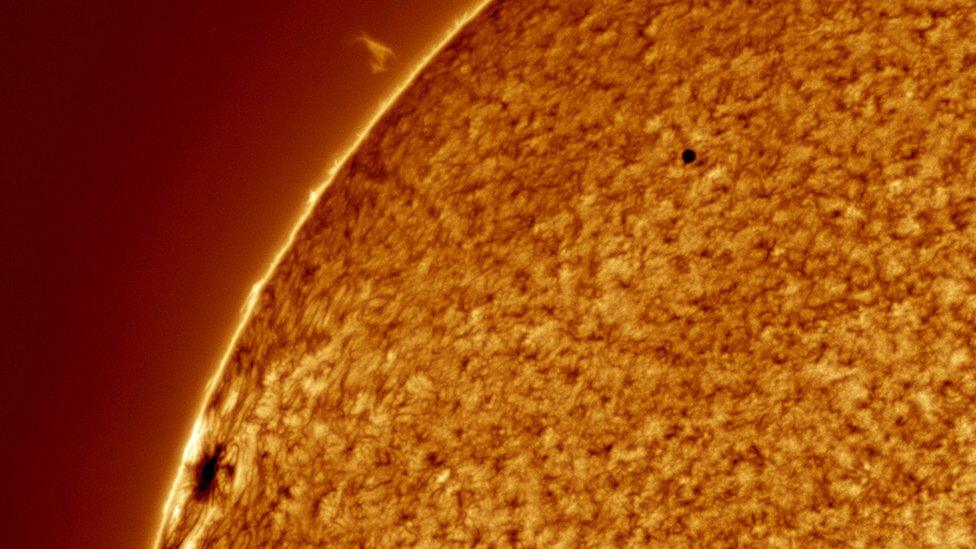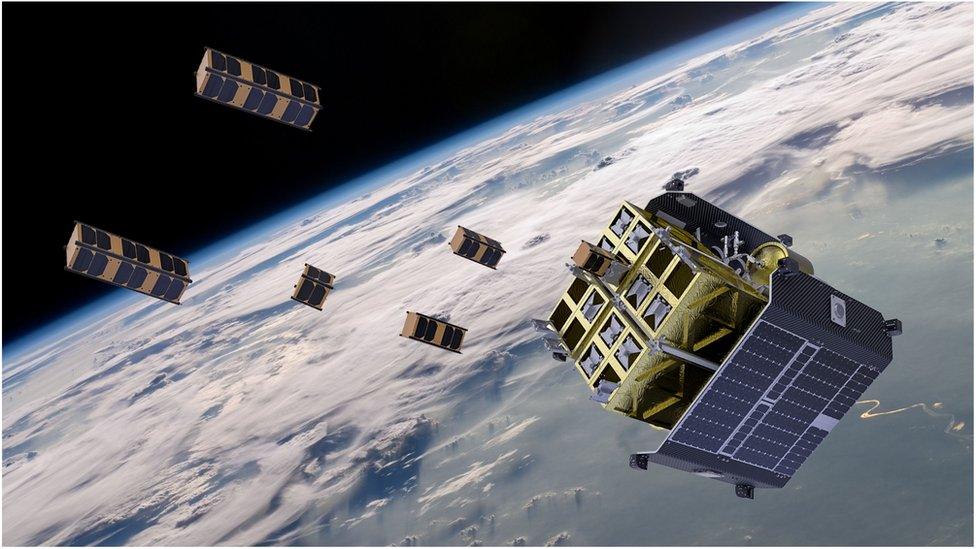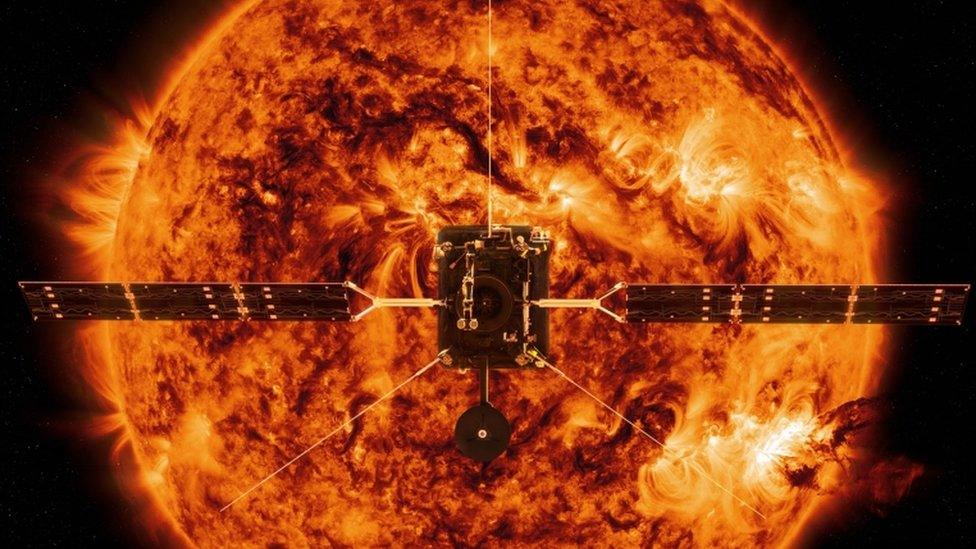Solar Cycle 25: The Sun has started a new solar weather cycle
- Published
- comments
Nasa filmed the Sun for ten years - check out the video!
The Sun has started a new solar cycle, meaning a period of space weather that can have serious consequences for technology on Earth and astronauts.
The Sun goes through a regular cycle of calm and stormy activity, which lasts for around 11 years. Nasa has now announced the beginning of a new one.
The new solar cycle, called 'Solar Cycle 25', could result in an increase in the Sun's activity over the next few years.
Although we might not see much difference here on Earth, changes in the solar cycle can damage satellites, cut off communication signals, and also be dangerous for astronauts exposed to higher than normal levels of radiation, so it's important for Nasa to monitor the Sun's behaviour.
However, the Sun's activity isn't always catastrophic with the energy it releases creating beautiful auroras, bright lights seen in the night sky on Earth.
So what does a new solar cycle mean?
The next solar maximum, when the Sun is experiencing peak activity, is predicted to occur in July 2025.
Nasa says the solar minimum that marked the end of the last cycle actually happened in December 2019.
The Sun's unpredictable nature means that knowing when one cycle has ended and another has begun can take several months.
As the Sun heads into its new cycle, it could lead to dramatic events on the surface - giant explosions such as solar flares or coronal mass ejections that can spew light, energy and solar material into space.
"Space weather is what it is - our job is to prepare," said Jake Bleacher from Nasa.
"There is no bad weather, just bad preparation."

As the Sun becomes more active it can have an impact on technology
Why we shouldn't worry
According to experts from the Solar Cycle 25 Prediction Panel, 'Solar Cycle 25' will be very similar to 'Solar Cycle 24' which was the fourth smallest cycle on record and the weakest cycle in 100 years.
Despite the weakness of the last cycle, an epic storm erupted from the Sun in July 2012, but missed the Earth.
"The most important thing to remember with predictions is, you're going to be wrong," said Dean Pesnell, a solar cycle expert at Nasa's Goddard Space Flight Center.
"You're never going to be perfect. It's what you learn from that, that allows you to make progress in your predictions."
Watch this enormous solar flare from 2017
How can you have a weather forecast in space?
The Sun is a huge ball of electrically-charged hot gas. This charged gas moves, generating a powerful magnetic field.
Every 11 years or so, as the Sun's cycle comes to an end the magnetic field completely flips.
This means that the Sun's north and south poles switch places, a bit like the sides of a magnet swapping from positive to negative. It takes about another 11 years for the Sun's north and south poles to flip back again.
As the magnetic fields change, so does the amount of activity on the Sun's surface, which means more sunspots start to appear.

Sunspots which appear as dark patches on the star's surface indicate an increase in activity
What are sunspots?
Sunspots, are dark spots on the Sun, their numbers help scientists monitor our star's activity.
Sunspots appear darker because they're cooler than their surroundings, they are the areas of the Sun where huge explosions of light and energy take place. Most sunspots cover an area about the size of the Earth or even bigger!
The middle of the solar cycle is the solar maximum, or when the Sun has the most sunspots. As the cycle ends, it fades back to the solar minimum and then a new cycle begins.
During the peak activity of the last solar cycle, 120 sunspots were recorded.
About 115 sunspots are predicted for the peak of this new cycle and anything over 200 is considered to be above-average for sunspots.
"Just because it's a below-average solar cycle, doesn't mean there is no risk of extreme space weather," said Doug Biesecker, a solar physicist.
"The Sun's impact on our daily lives is real and is there," he said.
- Published3 June 2020

- Published16 September 2020

- Published10 February 2020

